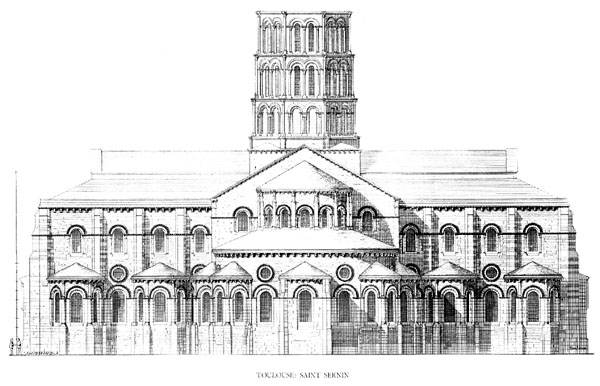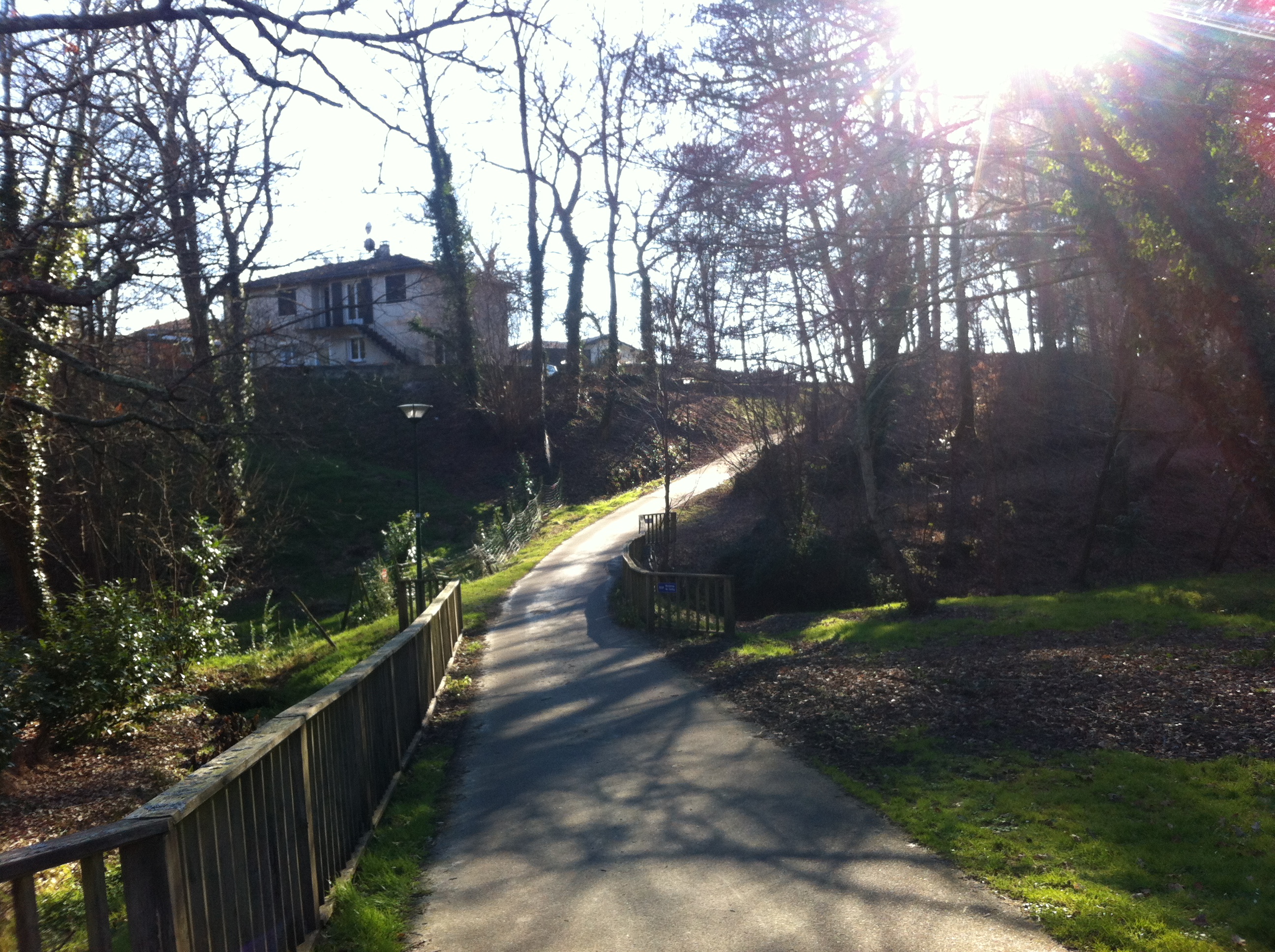|
St. Sever
Saint-Sever (, Gascon ''Sent Sever'' ) is a commune in the Landes department in Nouvelle-Aquitaine in southwestern France. History and geography Saint-Sever stands on an eminence. It is south of Mont-de-Marsan, on the left bank of the Adour in the Chalosse area. Neighboring communes: Benquet, Bas-Mauco, Audignon, Cauna, Aurice, Montaut, Banos, Coudures, Eyres-Moncube, Montsoué, Montgaillard. The town's abbey was founded by Guillaume Sanche lord of Gascony in the late 10th century. According to the monastic chronicles, this was as the result of a vow he made after the battle of Taller, in Gascony, in which he defeated the Vikings (982). In 1060, after a fire, the abbey was reconstructed on the model of Cluny under the direction of the abbot Gregori de Montaner. The Saint-Sever Beatus was the work of monks working under the direction of the same abbot; Abbot Gregori held the post from 1028 to 1072. Sights Its streets, bordered in places by old houses, are narro ... [...More Info...] [...Related Items...] OR: [Wikipedia] [Google] [Baidu] |
Communes Of France
The () is a level of administrative division in the French Republic. French are analogous to civil townships and incorporated municipalities in the United States and Canada, ' in Germany, ' in Italy, or ' in Spain. The United Kingdom's equivalent are civil parishes, although some areas, particularly urban areas, are unparished. are based on historical geographic communities or villages and are vested with significant powers to manage the populations and land of the geographic area covered. The are the fourth-level administrative divisions of France. vary widely in size and area, from large sprawling cities with millions of inhabitants like Paris, to small hamlets with only a handful of inhabitants. typically are based on pre-existing villages and facilitate local governance. All have names, but not all named geographic areas or groups of people residing together are ( or ), the difference residing in the lack of administrative powers. Except for the municipal arr ... [...More Info...] [...Related Items...] OR: [Wikipedia] [Google] [Baidu] |
Coudures
Coudures (; Gascon: ''Coduras'') is a commune in the Landes department, Nouvelle-Aquitaine, southwestern France. It is located SSE of Saint-Sever and from Eyres-Moncube. Geography Coudures is in the area south of the river Adour The Adour (; eu, Aturri; oc, Ador) is a river in southwestern France. It rises in High-Bigorre (Pyrenees), in the commune of Aspin-Aure, and flows into the Atlantic Ocean (Bay of Biscay) near Bayonne. It is long, of which the uppermost ca. i .... This area is far more pronounced in altitude differences than North of the river - where the land is virtually flat for many kilometres. From several places in Coudures it is possible to see the Pyrenees Mountains on a clear day. The Pyrenees are around south of the village. Sights The village has a 13th-century Anglican Church which can be seen in many old photos but with a different looking tower to today as the old tower top was destroyed by a lightning strike in the 20th century. There are ... [...More Info...] [...Related Items...] OR: [Wikipedia] [Google] [Baidu] |
Benedictine
, image = Medalla San Benito.PNG , caption = Design on the obverse side of the Saint Benedict Medal , abbreviation = OSB , formation = , motto = (English: 'Pray and Work') , founder = Benedict of Nursia , founding_location = Subiaco Abbey , type = Catholic religious order , headquarters = Sant'Anselmo all'Aventino , num_members = 6,802 (3,419 priests) as of 2020 , leader_title = Abbot Primate , leader_name = Gregory Polan, OSB , main_organ = Benedictine Confederation , parent_organization = Catholic Church , website = The Benedictines, officially the Order of Saint Benedict ( la, Ordo Sancti Benedicti, abbreviated as OSB), are a monastic religious order of the Catholic Church following the Rule of Saint Benedict. They are also sometimes called the Black Monks, in reference to the colour of their religious habits. They w ... [...More Info...] [...Related Items...] OR: [Wikipedia] [Google] [Baidu] |
Apse
In architecture, an apse (plural apses; from Latin 'arch, vault' from Ancient Greek 'arch'; sometimes written apsis, plural apsides) is a semicircular recess covered with a hemispherical vault or semi-dome, also known as an '' exedra''. In Byzantine, Romanesque, and Gothic Christian church (including cathedral and abbey) architecture, the term is applied to a semi-circular or polygonal termination of the main building at the liturgical east end (where the altar is), regardless of the shape of the roof, which may be flat, sloping, domed, or hemispherical. Smaller apses are found elsewhere, especially in shrines. Definition An apse is a semicircular recess, often covered with a hemispherical vault. Commonly, the apse of a church, cathedral or basilica is the semicircular or polygonal termination to the choir or sanctuary, or sometimes at the end of an aisle. Smaller apses are sometimes built in other parts of the church, especially for reliquaries or shrines of ... [...More Info...] [...Related Items...] OR: [Wikipedia] [Google] [Baidu] |
Romanesque Architecture
Romanesque architecture is an architectural style of medieval Europe characterized by semi-circular arches. There is no consensus for the beginning date of the Romanesque style, with proposals ranging from the 6th to the 11th century, this later date being the most commonly held. In the 12th century it developed into the Gothic style, marked by pointed arches. Examples of Romanesque architecture can be found across the continent, making it the first pan-European architectural style since Imperial Roman architecture. The Romanesque style in England and Sicily is traditionally referred to as Norman architecture. Combining features of ancient Roman and Byzantine buildings and other local traditions, Romanesque architecture is known by its massive quality, thick walls, round arches, sturdy pillars, barrel vaults, large towers and decorative arcading. Each building has clearly defined forms, frequently of very regular, symmetrical plan; the overall appearance is one of simpli ... [...More Info...] [...Related Items...] OR: [Wikipedia] [Google] [Baidu] |
Abbaye St Sever 7
An abbey is a type of monastery used by members of a religious order under the governance of an abbot or abbess. Abbeys provide a complex of buildings and land for religious activities, work, and housing of Christian monks and nuns. The concept of the abbey has developed over many centuries from the early monastic ways of religious men and women where they would live isolated from the lay community about them. Religious life in an abbey may be monastic. An abbey may be the home of an enclosed religious order or may be open to visitors. The layout of the church and associated buildings of an abbey often follows a set plan determined by the founding religious order. Abbeys are often self-sufficient while using any abundance of produce or skill to provide care to the poor and needy, refuge to the persecuted, or education to the young. Some abbeys offer accommodation to people who are seeking spiritual retreat. There are many famous abbeys across the Mediterranean Basin and Europe ... [...More Info...] [...Related Items...] OR: [Wikipedia] [Google] [Baidu] |
Cluny
Cluny () is a commune in the eastern French department of Saône-et-Loire, in the region of Bourgogne-Franche-Comté. It is northwest of Mâcon. The town grew up around the Benedictine , image = Medalla San Benito.PNG , caption = Design on the obverse side of the Saint Benedict Medal , abbreviation = OSB , formation = , motto = (English: 'Pray and Work') , found ... Abbey of Cluny, founded by Duke William I of Aquitaine in 910. The height of Cluniac influence was from the second half of the 10th century through the early 12th. The abbey was sacked by the Huguenots in 1562, and many of its valuable manuscripts were destroyed or removed. Geography The river Grosne flows northward through the commune and crosses the town. See also * Cluniac Reforms * Communes of the Saône-et-Loire department References External links Official website(in French) Communes of Saône-et-Loire Burgundy { ... [...More Info...] [...Related Items...] OR: [Wikipedia] [Google] [Baidu] |
Taller
Taller is a Communes of France, commune in the Landes (department), Landes Departments of France, department in Nouvelle-Aquitaine in southwestern France. William II Sánchez of Gascony perpetrated a major defeat of the Vikings at Taller in 982 and they vanished as a serious threat thereafter. Population Etymology The origins of the name "Taller" are still uncertain but might come from the English word "tall", which could be related to the altitude of the village from which went from 70 to 90m in 982. Taller used to be called Talleyras. History Legends say that in 982 :fr:Guillaume Sanche de Gascogne, Guillaume Sanche duc d'Aquitaine (:fr:Gascogne, Gascogne) fought and won against the Normans (Vikings). During World War II, Taller used to be a German ammunition depot. Geography Taller is located in France, in Nouvelle-Aquitaine in the Landes department, near Dax Pilgrims walk through the village because it is part of the ":fr:Chemins de Compostelle, Chemin de Com ... [...More Info...] [...Related Items...] OR: [Wikipedia] [Google] [Baidu] |
Gascony
Gascony (; french: Gascogne ; oc, Gasconha ; eu, Gaskoinia) was a province of the southwestern Kingdom of France that succeeded the Duchy of Gascony (602–1453). From the 17th century until the French Revolution (1789–1799), it was part of the combined Province of Guyenne and Gascony. The region is vaguely defined, and the distinction between Guyenne and Gascony is unclear; by some they are seen to overlap, while others consider Gascony a part of Guyenne. Most definitions put Gascony east and south of Bordeaux. It is currently divided between the region of Nouvelle-Aquitaine (departments of Landes, Pyrénées-Atlantiques, southwestern Gironde, and southern Lot-et-Garonne) and the region of Occitanie (departments of Gers, Hautes-Pyrénées, southwestern Tarn-et-Garonne, and western Haute-Garonne). Gascony was historically inhabited by Basque-related people who appear to have spoken a language similar to Basque. The name Gascony comes from the same root as the wor ... [...More Info...] [...Related Items...] OR: [Wikipedia] [Google] [Baidu] |
William II Sánchez Of Gascony
William is a male given name of Germanic origin.Hanks, Hardcastle and Hodges, ''Oxford Dictionary of First Names'', Oxford University Press, 2nd edition, , p. 276. It became very popular in the English language after the Norman conquest of England in 1066,All Things William"Meaning & Origin of the Name"/ref> and remained so throughout the Middle Ages and into the modern era. It is sometimes abbreviated "Wm." Shortened familiar versions in English include Will, Wills, Willy, Willie, Bill, and Billy. A common Irish form is Liam. Scottish diminutives include Wull, Willie or Wullie (as in Oor Wullie or the play ''Douglas''). Female forms are Willa, Willemina, Wilma and Wilhelmina. Etymology William is related to the given name ''Wilhelm'' (cf. Proto-Germanic ᚹᛁᛚᛃᚨᚺᛖᛚᛗᚨᛉ, ''*Wiljahelmaz'' > German ''Wilhelm'' and Old Norse ᚢᛁᛚᛋᛅᚼᛅᛚᛘᛅᛋ, ''Vilhjálmr''). By regular sound changes, the native, inherited English form of the name should b ... [...More Info...] [...Related Items...] OR: [Wikipedia] [Google] [Baidu] |
Saint-Sever Abbey
Saint-Sever Abbey (''abbaye de Saint-Sever'') is a Benedictine monastery in Saint-Sever, Landes, France. It was founded at the end of the 10th century by William II Sánchez of Gascony. It was listed by France as a historic monument on 18 November 1911 and in 1998 it and other sites were jointly designated as the Routes of Santiago de Compostela in France World Heritage Site A World Heritage Site is a landmark or area with legal protection by an international convention administered by the United Nations Educational, Scientific and Cultural Organization (UNESCO). World Heritage Sites are designated by UNESCO for .... Bibliography *Jean-Auguste Brutails, 1900: ''L'église abbatiale de Saint-Sever'' in ''Bulletin Archéologique'' *Daniel Le Blévec (dir.) and Centre historique de recherches et d'études médiévales sur la Méditerranée occidentale (Éditeur scientifique): ''Les cartulaires méridionaux: actes du colloque organisé à Béziers les 20 et 21 septembre 2002 ... [...More Info...] [...Related Items...] OR: [Wikipedia] [Google] [Baidu] |





